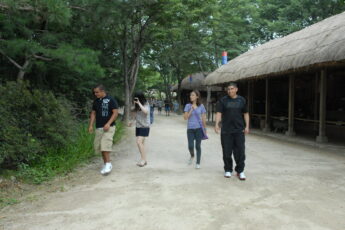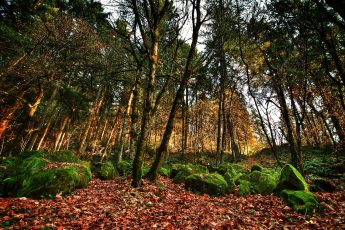Orienteering maps are highly detailed topographic maps of the terrain and are five times more detailed than the average OS map. Orienteering maps use different colours to represent the terrain, with white space representing the runnable forest. Other colours include brown and blue to mark water features and landforms. In this article, we’ll take a look at the benefits of using an orienteering map.
Orienteering maps are specialized topographic maps
Orienteering is a sport where participants navigate by following a course on a specialized topographic map. Typically, these maps include orange and white control markers and distinctive punches for scoring. There are rewards every few hundred meters, giving the game a sense of suspense. It also requires decision-making and an understanding of the terrain. In addition, these maps are generally more detailed than general topographic maps.
Orienteering maps are produced on a much larger scale than other topographic maps. They feature detailed terrain information and numerous symbols such as tracks and paths. They also often include symbols for fences, walls, and water features. Orienteering maps are highly detailed and include accurate measurements. To help you choose the right map, check out these helpful tips. To get the most out of your orienteering course, be sure to purchase a map that includes detailed information about the terrain.
To create a quality orienteering map, a professional cartographer must first consider the location where the competitors will compete. Often, a government-controlled forest is the most suitable location, because the map is likely to be used for many years. On the other hand, private property is more difficult to use, and permission may be withdrawn. If the area is not government-controlled, orienteering maps are not ideal for large competitions.
They represent the terrain
There are a number of ways to depict terrain on Orienteering maps. Some mappers choose to enhance the shape of prominent features, displacing contours, or using a form line to depict land features between contours. This helps orienteers identify land features, such as depressions or platforms. The mapper can also draw the course and any Out of Bounds areas. These elements make it easier for orienteers to plot the course.
Orienteering maps are often very detailed, usually at a scale of 1:10,000, five times greater than the scale of an OS map. Different colors indicate different types of terrain. For example, white signifies runnable forests, whereas green indicates less visibility. Orienteering maps also show the location of water and other features in the area. Additionally, they also include a number of landmarks.
Orienteering maps often include topographical lines and esoteric iconography. Some types of terrain include mountains, bogs, houses, and industrial estates. In addition to this, orienteering maps include dotted and solid lines to indicate terrain types. Orienteering maps are similar to topographical maps, which are often used by orienteers to navigate the backcountry.
They are detailed
Orienteering maps are highly detailed, usually containing several different layers. Each map contains a course, the starting and finishing points, control points, and connecting lines. The map also shows the correct way to navigate through the course and identifies the necessary punches. There are three types of maps: medium, short, and long. You may choose to use one or all of them, depending on your skills.
Orienteering maps show enough detail to help you navigate through the course efficiently. These maps also show features that hinder your progress, such as power lines, fences, and depressions in the ground. These maps are extremely helpful to orienteers, because they let you know which tracks to take and which trails are best avoided. Further, they allow you to move quickly and easily. Orienteering maps are very accurate and easy to use, as they have high-resolution details.
Orienteering maps are also detailed topographic maps, which aid you in navigation. They show physical features such as gullies, lakes, cities, and more. You can find different maps based on the terrain you’re exploring. They can be useful for training exercises, as well as for major competitions. Orienteering maps are detailed, but don’t be fooled by their clarity.
They have contour lines
Contoured maps are not always the best choice for orienteering. Orienteering courses require a high degree of observational skills, so a contour line can provide crucial clues. In addition, in advanced courses, control features may be located on spurs or at the top of hills. These contour lines show the shape of the terrain and the changes in elevation. Contoured maps have contour lines that connect points of equal elevation.
Orienteering maps use five standard colors to indicate different types of terrain. White is a runnable forest. Darker green is less visible. Yellow and orange represent open land. The density of the color indicates how clear the area is. Light and dark colors indicate rough open land, while blue and black indicate lakes or streams, and trails. For more detailed maps, it is important to choose one that has contour lines.
The angle between true north and magnetic north can vary widely between regions, which is why Orienteering maps include contour lines. By drawing reference lines, orienteers can easily align a map to magnetic north without a great deal of guesswork. Orienteers will also use a compass to determine the true north. The contour lines on a map also make it easy to match terrain features to a contour line.
They are white
Orienteering maps are white to facilitate reading. Typically, they contain features like roads, settlements, and industrial estates. However, some of these features are not actually cairns. They may instead be rock formations, Ordnance Survey triangulation pillars, and even caves. In addition to road features, orienteering maps also depict vegetation and other features that slow the orienteer.
Orienteering maps are detailed and are five times larger than standard OS maps. Because of this, the colour scheme must be understood carefully. White space represents runnable forest, while black indicates man-made features. The various shades of green indicate landforms and water features. In addition to color, orienteering maps also display contour lines. Using this system helps you find the correct course for your next outing.
Orienteering maps are also generally large-scale. The scale represents the size of the area on the map in relation to its actual size. A scale of 1:10,000 is common for large championship events, while one-thousandth of an inch on a standard orienteering map is equal to seven-thousandths of a mile on the ground. Orienteering maps also generously use colour to indicate terrain features.
They have control description symbols
Orienteering maps have five-color symbols for locating controls. The control description is a picture or phrase that orienteers use to find the control. Control descriptions are printed on the map and are sometimes also separate information sheets. The descriptions are usually written in plain language, but can become more technical as the course gets more difficult. For example, control 2 is a boulder 1 metre high, on the north-east side of the course.
Orienteering maps also contain symbols that represent different types of controls. These symbols are similar to those used on road maps but are easier to understand. For example, a Directional Triangle with an Arrowhead indicates an alternate route or specific control site. Similarly, an Arrowhead indicates a side trail to a control site, which may be a good option if the way you originally planned is blocked by water or a landslide.
Symbols on orienteering maps can also help the competitors find the control feature. The control feature is the center of the circle, and the map will have a description for the control in the appearance column. These symbols should include the control’s description, size, and location relative to the feature. Additionally, they should indicate any important information that may be useful to the competitor. Orienteering maps also have control description symbols for both beginner and advanced level competitors.
They are printed at a scale of 1:15,000 or 1:10,000
Orienteering maps are usually printed at a scale of 1:15,000 or 10000, but are often enlarged to increase visibility. Overprint symbols should be approximately 50% larger on the scale of 1:10,000 than on a 1:15 000 map. Whether a map is enlarged or not is entirely up to the individual, but for practical purposes, the ISOM recommends using circles that are 6mm in diameter.
Orienteering maps are often produced by dedicated individuals, but professional mapping companies are increasingly used for competition. In the UK, companies such as Harveys, Martin Bagness Orienteering Services, Peel Land Surveys, Stirling Surveys, and IOF produce maps. A 1:15,000 or 1:10,000 scale map shows a particular area, such as a park or rogaine.
Orienteering maps are generally printed at a scale of 1:15,000 or 1:10k, which means that one unit on the map corresponds to approximately ten thousand units in the real world. Orienteering maps are often printed at these scales, although a 1:10k map may be more appropriate for a shorter course. One common reason for this is that the maps are made for older competitors who may not need the large scales. A 1:4000 or even a 1:1000 scale map is also used for shorter courses.
aeorienteering.com is reader-supported. When you buy through links on our site, we may earn an affiliate commission.



